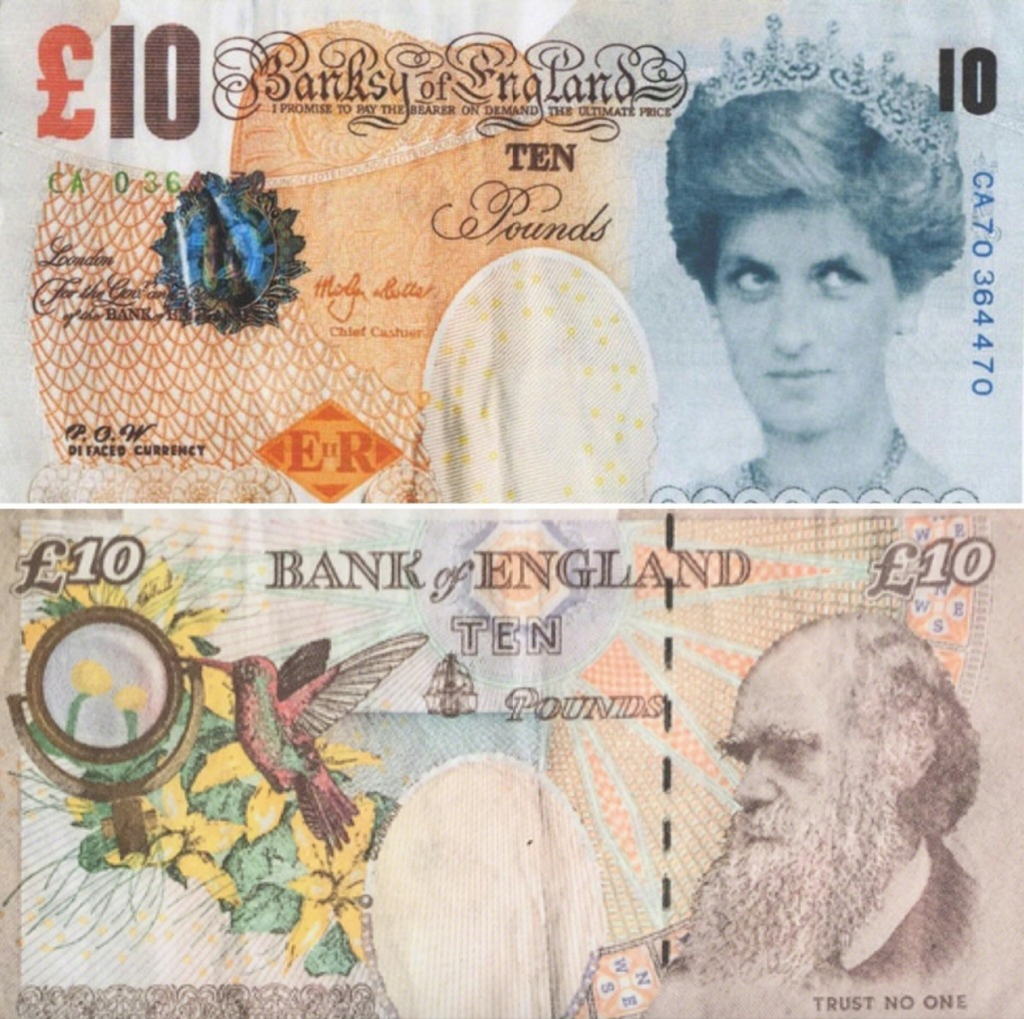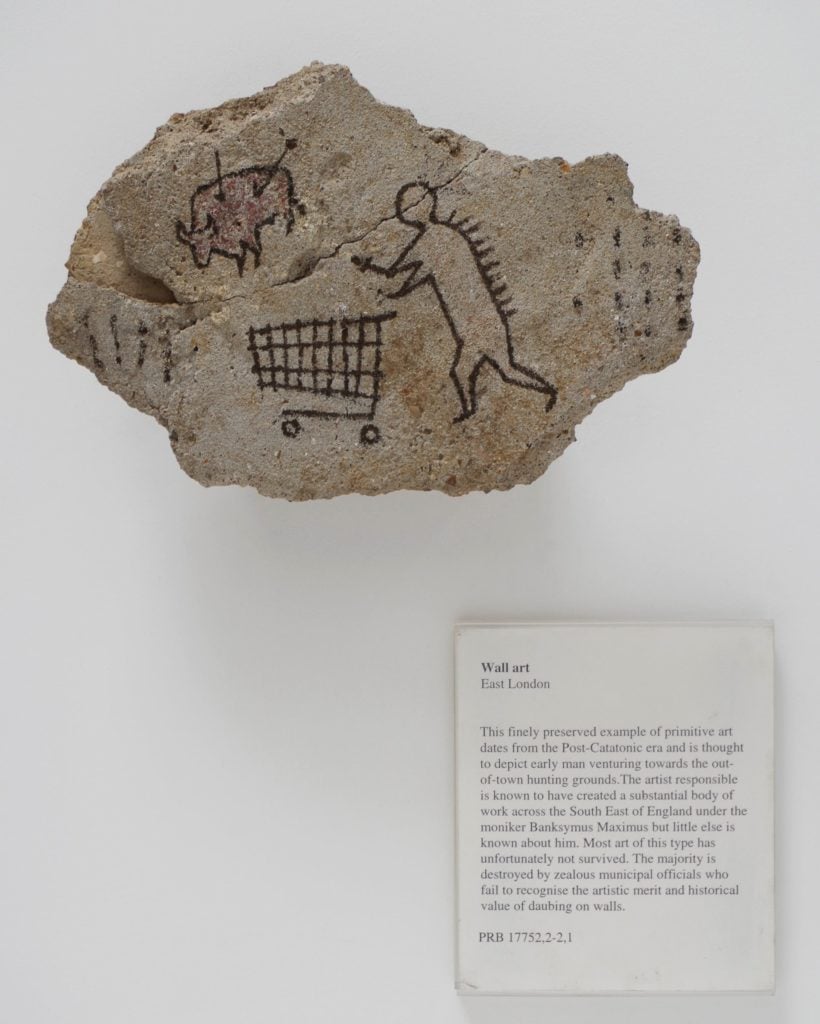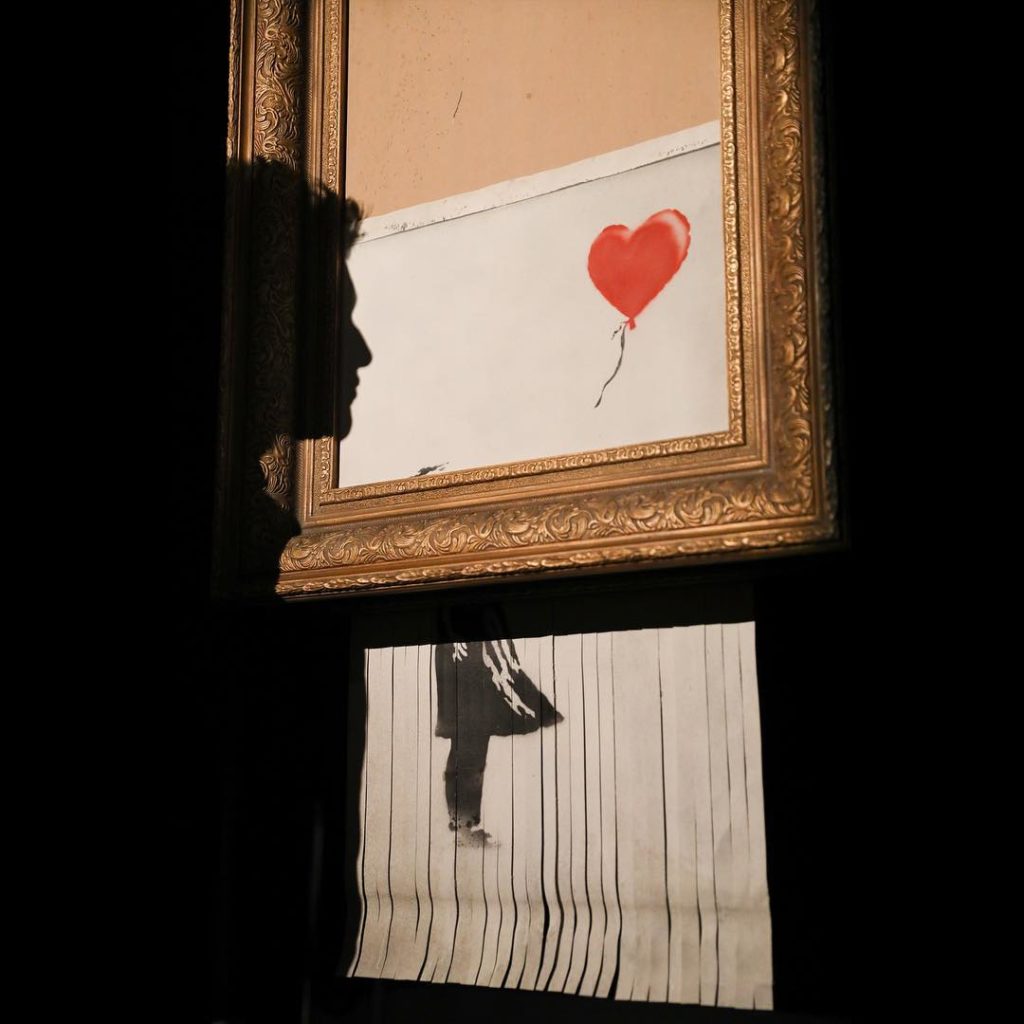Art World
Banksy’s Fake £10 Note Will Become the First Work by the Artist to Enter the British Museum’s Collection
The note features the late Princess Diana in place of Queen Elizabeth II.

The note features the late Princess Diana in place of Queen Elizabeth II.

The British Museum has added its first piece by notorious British street artist Banksy to its collection, and the piece is a counterfeit—counterfeit currency, that is. In 2004, Banksy printed £1 million worth of fake £10 notes that replaced the visage of Queen Elizabeth II with that of late Princess Diana. Banksy then dropped the money on crowds at the Notting Hill Carnival and at the Reading Festival.
Banksy’s management company and authentication entity, Pest Control, has now donated one of these bills to the museum, according to the Art Newspaper. It is titled Di-faced Tenner, a play on the word “defaced.” Issued by the “Banksy of England,” the currency reads “trust no one” on the verso, which features Charles Darwin. The bill will join the British Museum’s department of coins and metals (rather than prints and drawings).
Although the British Museum doesn’t have any immediate plans to exhibit Di-Faced Tenner, it turns out that Banksy has already shown some of his other work there, albeit clandestinely. In 2005, he surreptitiously installed a fake cave painting, Peckham Rock, featuring a hunter pushing a supermarket cart, in the museum’s Roman Britain gallery.

Banksy, Peckham Rock (2005). The piece was secretly installed at the British Museum in 2005 and went undetected for days. Photo courtesy of Banksy and Pest Control.
Accompanying wall text, designed to mimic the museum wall labels, notes that “this finely preserved example of primitive art dates from the Post-Catatonic era. The artist responsible is known to have created a substantial body of work across South East of England under the moniker Banksymus Maximus but little else is known about him. Most art of this type has unfortunately not survived. The majority is destroyed by zealous municipal officials who fail to recognize the artistic merit and historical value of daubing on walls.”
The prank is said to have gone undetected for three days. “It was the cause of considerable embarrassment for the museum at the time and when Banksy asked for it back we were only too pleased to oblige,” British Museum curator Tom Hockenhull told the Guardian last May. (The museum later asked for it back on loan to include as part of a 2018 group show on dissent.)

Banksy’s Love Is in the Bin (2018). Courtesy of Sotheby’s.
Today, Banksy is more popular than ever, thanks in part to his recent prank at Sotheby’s London last October, in which he orchestrated his own work Girl With a Balloon to self-shred moments after the auctioneer hammered it down for £1 million ($1.4 million).